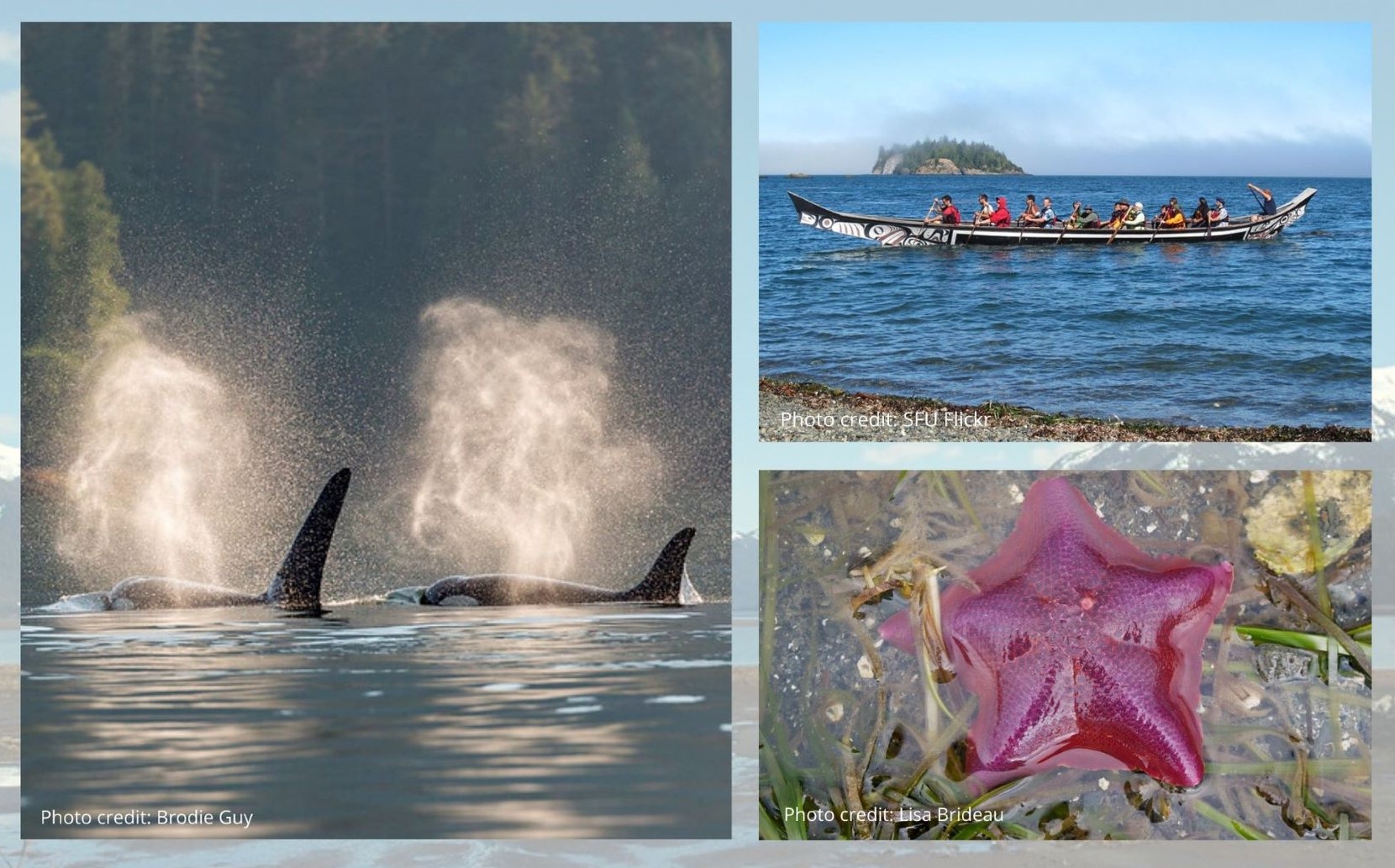
The Great Bear Sea, also known as the Northern Shelf Bioregion on the north coast of BC, is an area of profound beauty, ecological diversity and cultural richness. Rich ecosystems support an abundance of life – from salmon, herring, humpback whales and orcas to seabirds, bears and wolves.
For millennia, the health of BC’s north coast has been inextricably linked to the health of the Indigenous nations of the area, and the ocean continues to play a pivotal role in the wellbeing of the region’s communities and economy, supporting logging, fishing, aquaculture, tourism and transportation.
And this beautiful and life-sustaining area will soon be protected by Canada’s first Marine Protected Area (MPA) Network.
What is an MPA Network?
MPAs are areas of the ocean that are set aside from human activities so that marine life can recover and thrive. An MPA network is a collection of individual MPAs that work together in a cooperative and synergistic way, amplifying the benefits of each individual site.
Similar to habitat corridors on land, MPA networks are designed to bridge between and support the myriad strands in the web of ocean life. Advantages of an MPA network over individual isolated MPAs include:
- continuous habitat corridors for migratory and wide-ranging species,
- avoiding displacement of impacts from one MPA to another,
- ensuring that the full range of coastal and marine wildlife and their habitats are protected,
- giving species at risk or overexploited species enough space for essential functions such as reproduction, and
- potentially enhancing fisheries production due to fish spillover effects.
Interconnected species need interconnected protection, and MPA networks operate at a regional scale to protect entire ecosystems in a comprehensive way.
MPA networks have been part of Canada’s ocean laws since the Oceans Act was enacted in 1997, mandating the Minister of Fisheries and Oceans to “lead and coordinate the development and implementation of a national network of marine protected areas.” Since 2016, the federal government has increased its attention to marine conservation, setting and achieving ocean conservation targets and renewing its interest in MPA networks.
While planning for MPA networks is underway on the Atlantic coast, here on the Pacific, the MPA network in the Great Bear Sea (also known as the Northern Shelf Bioregion) is the furthest along and nearing completion.
Why the Great Bear Sea?
Canada’s first MPA network builds on decades of co-leadership between Indigenous, federal and provincial governments on marine spatial planning in the Great Bear Sea. This includes the federal-provincial-Indigenous Pacific North Coast Integrated Management Area (PNCIMA) project, and the spatial plans produced by the provincial-Indigenous Marine Planning Partnership (MaPP).
The MPA network planning process takes these initiatives one step further through deep analysis of the key ecosystems and wildlife of the area, and comprehensive consultations with stakeholders in the fishing, shipping, logging, aquaculture, tourism and conservation sectors. The fruits of this extra labour will soon be revealed in a map of all the connected sites and an action plan.
The Great Bear Sea is also a place of remarkable marine life. Large intact kelp forests and eelgrass meadows provide habitat for fish and other marine life. The Douglas Channel is home to the country’s highest concentration of humpback and fin whales.
The region also hosts the largest remaining ancient glass sponge reefs, some eight stories high. But these wonders of nature are vulnerable to pressures from increasing human use, and human-caused problems like climate change. The species and ecosystems of the Great Bear Sea need protected areas to be able to recover and survive.
What’s next?
The MPA network planning partners have identified a draft network plan that is expected to be released to the public in the next year. As planning of the MPA network progresses, West Coast has identified and advocated for binding legal protections to ensure that the MPA network is strong and lasting.
We have identified comprehensive designation tools that will match the comprehensive planning in the area. It’s also essential that the legal framework that enshrine co-leadership in meaningful co-governance structures.
In other places around the globe, experts say an effective legal foundation is a crucial factor in the success of MPAs and MPA networks. BC, Canada, and Indigenous Nations need to turn their attention to the issues of law and governance for this network soon. West Coast is ready to help.
The establishment of MPA networks is timely, as we face cascading global crises of declining abundance of wildlife and degradation of natural habitat, marine heatwaves, ocean acidification, and sea level rise. Completing Canada’s first MPA network for the Great Bear Sea is an opportunity to protect these pristine ecosystems that remain untouched by excessive human use for the inheritance of future generations.